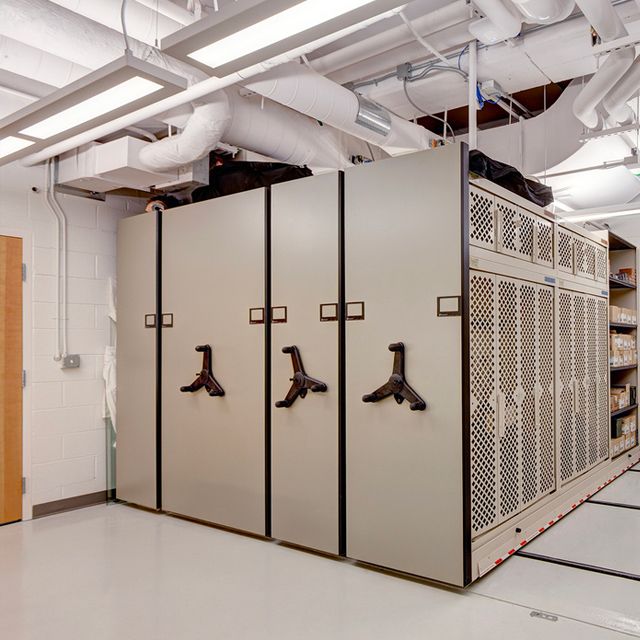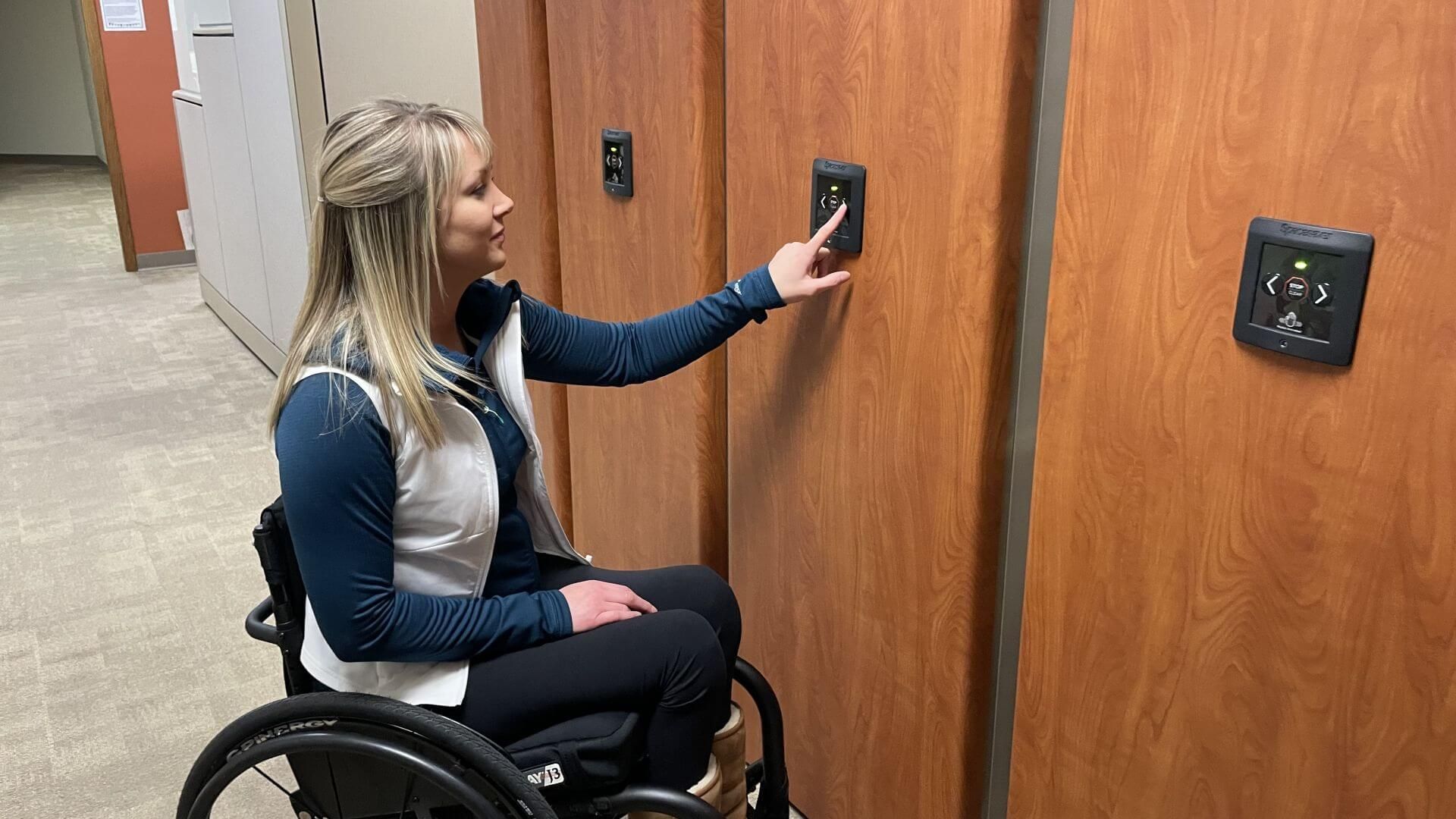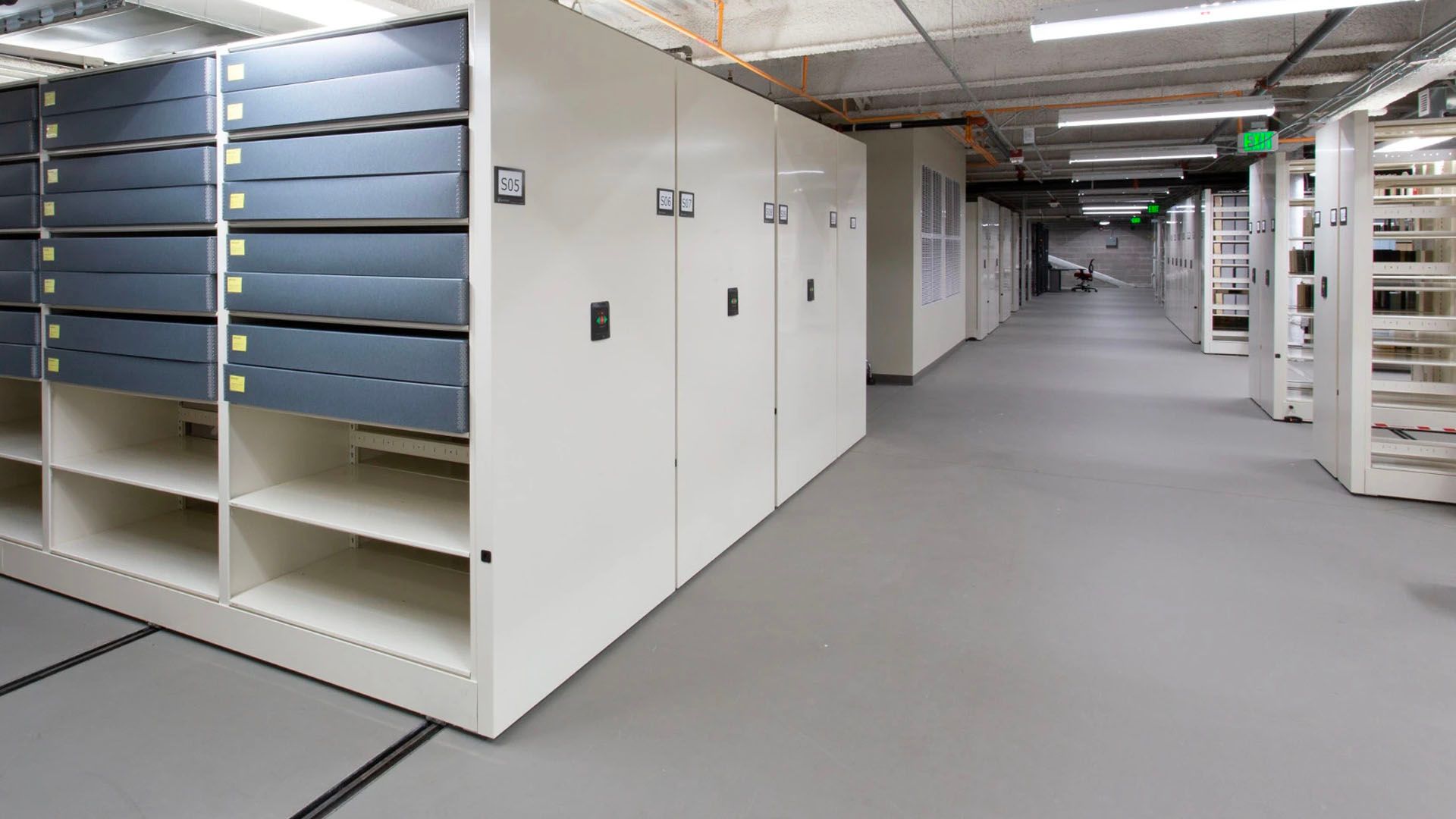The Seismic Storage Basics
Why secure storage is imperative in seismic zones.
An earthquake can cause a significant amount of damage to the buildings within its path. When such a catastrophe occurs, it’s important to have storage solutions in place that are not only reliable, but also limit the probability that the occupants of your building will be harmed by falling architectural, mechanical, electrical, and other non-structural components.
Spacesaver’s High-Density Mobile Storage system is built to maintain the safety, security, and stability of its contents, and each of these elements play an important role when developing dependable seismic storage solutions:
- Safety: The mobile system’s in-rail anti-tip mechanism combined with seismic rail anchoring, essentially makes the mobile system part of the building.
- Security: Options such as bolting shelving together back-to-back and to the carriage provides structural rigidity, and the systems are rigorously tested to ensure items of all sizes stay in place during a seismic situation.
- Stability: Reinforced carriage and platform structures as well as special platform anchoring channel provide seismic stability, while a patented recessed integral retaining lip ensures shelf attachment can withstand severe lateral forces.
Seismic Storage Determination
A structural engineer is the only person is qualified to say which seismic characteristics a mobile shelving system should have. Storage systems – particularly mobile storage systems attached to the concrete floor slab – are considered to have the same seismic design category as those of the structure they occupy or are attached to.
Our storage consultants work with structural engineers to identify the seismic category of the building in question and the corresponding design characteristics our solutions need to adhere to. Items such as the rail, anchor plates, end-stops, carriages, and the shelving within the mobile system all are affected by seismic design, and working with Spacesaver offers another level of assurance that the systems are in compliance.

Planning for Seismic Activity
Mobile storage is not specifically mentioned in building codes; however, several guidelines can be applied to making the systems safe for seismic areas. States such as California and Alaska might be the most seismically active regions in the United States, but other areas of the country are certainly reinforcing their buildings – and the items in them – for potential earthquakes.
At the Salt Lake City Public Safety Building, Spacesaver mobile storage is used throughout the space. Salt Lake City Deputy Chief Tim Doubt says they worked with a local architecture firm to design the building to withstand a 7.5 magnitude earthquake. The department and the firm both collaborated with Spacesaver to place mobile systems around the struts that keep the building stable. This will help the department to maintain power and services – allowing them to operate through and after an earthquake.

Need more information?
In the planning process of Salt Lake City’s Public Safety Building, it was imperative that seismic storage solutions be implemented. Click here to read the full case study of the project and how we were able to assist with the seismic concerns as well as helping the building attain LEED certification.
Need more information?
In the planning process of Salt Lake City’s Public Safety Building, it was imperative that seismic storage solutions be implemented. Click here to read the full case study of the project and how we were able to assist with the seismic concerns as well as helping the building attain LEED certification.



